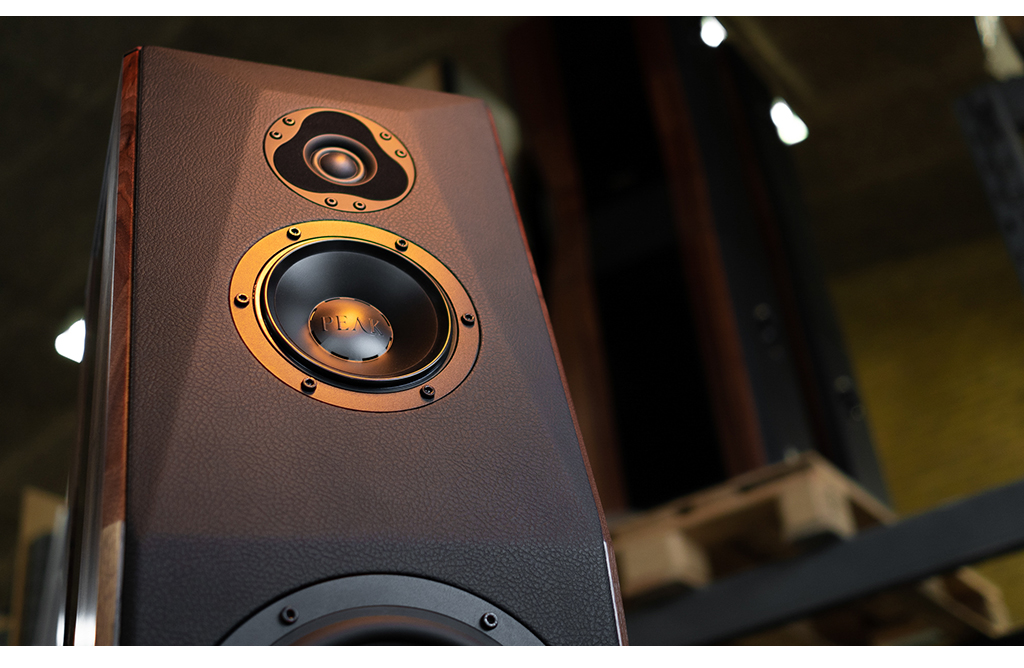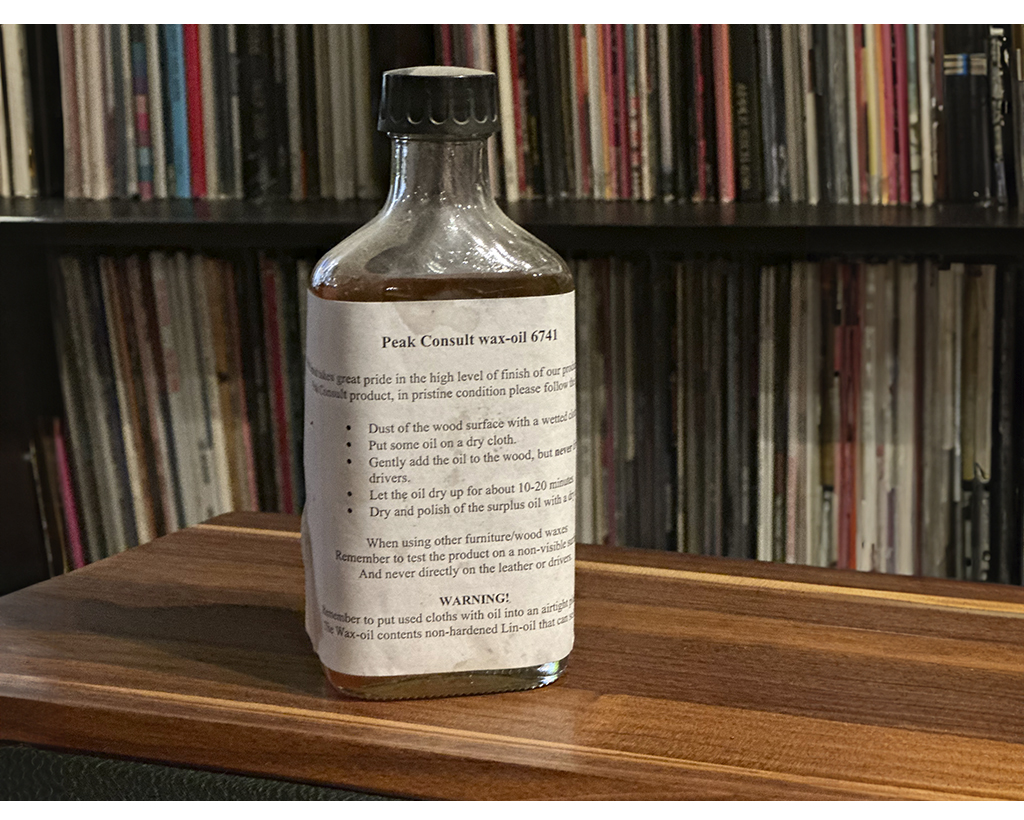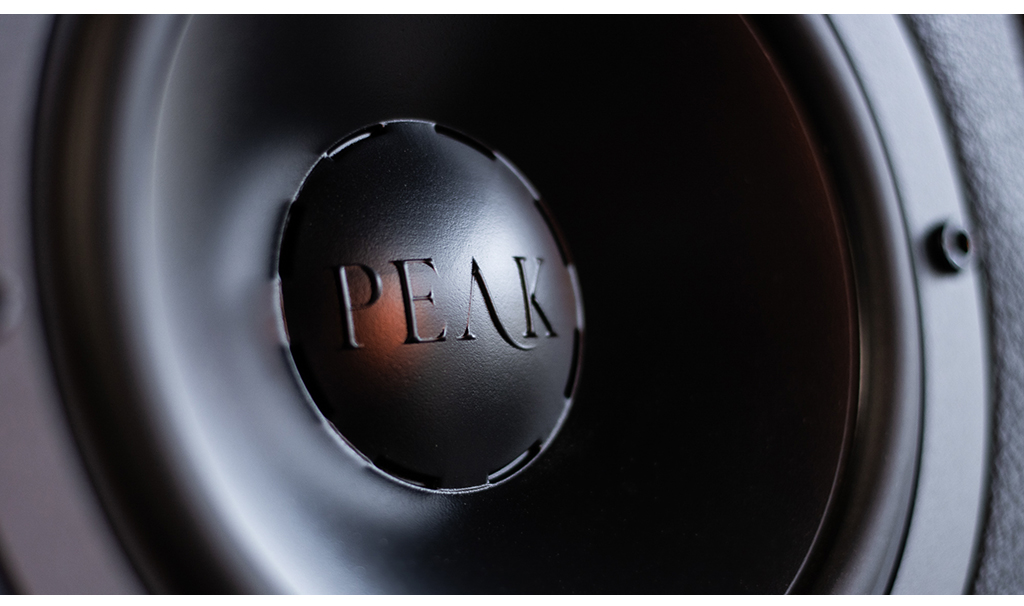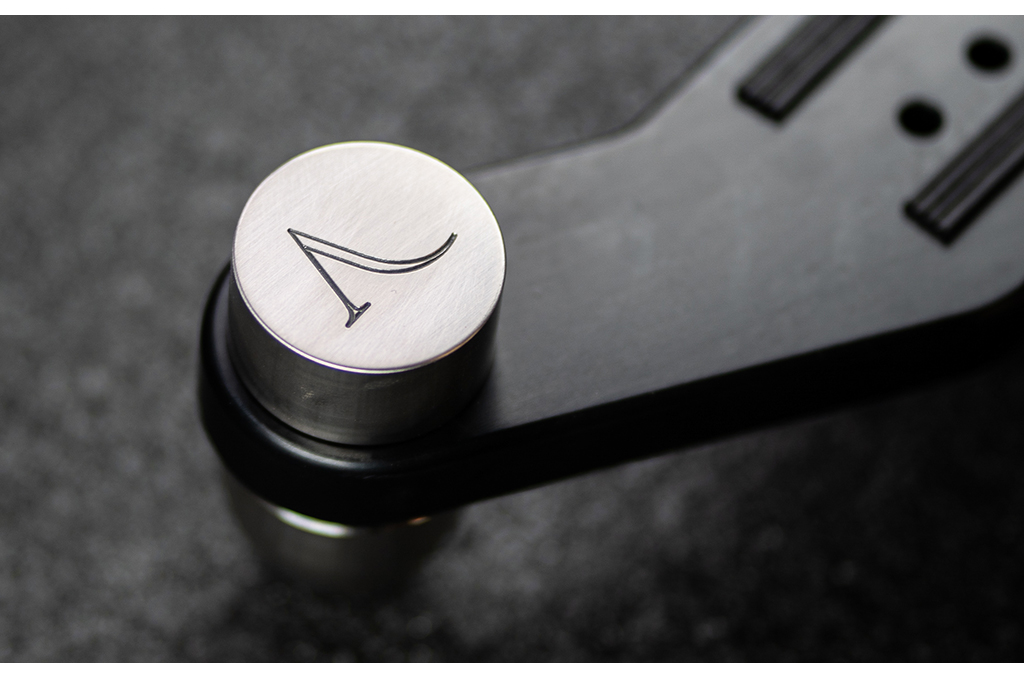The Peak Consult Sinfonia Speakers Welcome back!
By Jeff Dorgay
Listening to Kraftwerk’s “Boing Boom Tschak” through the Peak Consult Sinfonias has so much information in all three dimensions, it’s almost psychedelic. Tracking all the way through the Techno Pop album is almost too much fun. The sonic field created by these speakers is so enormous, you might think you were listening to a pair of big Sound Lab ESLs or MartinLogan CLX’s. However, the punchy bass convinces you these are no panels. Peak Consult has always had a way with sound.

The picture you see above is interesting because about 15 years ago we reviewed the Peak Consult Princess speakers and loved the engaging sound of these compact floor standing speakers. At the time, they had an MSRP of about $15,000/pair and were worth every penny. If you’ve ever seen a pair of Peak Consult speakers, you know that the build quality is incredible and even the small Princesses weighed over 100 pounds each. To say that these artisan-built cabinets are inert is an understatement. The Sinfonias you see here are $55,000/pair, and weigh 165lb. (75kg) each.
In my forgetful way, I neglected to send the accessory package back, containing a cleaning cloth, some cleaner for the leather surfaces, and a bottle of oil for the wood surfaces. When I called the late Chris Sommovigo, who at that time was the Peak importer, he said, “Just keep it, we’ll be sending you another pair for review shortly.” As fate would have it, that did not happen, and the Sinfonias were a welcome site, their large crates arriving practically the day I decided to tear all the walls down in my listening room. So, they stayed hidden in the garage, with my Mini pushed back to within a few millimeters of the crates as a bit of extra “security.”
Fortunately, all went smoothly, the walls came down, and the Sinfonias are now strutting their stuff in a 24 x 36-foot room. Initial setup attempts where past speakers sounded good yielded a slight upper bass bump, so after several different placements, they worked magnificently about three more feet into the room than before (which would not have been possible in the old room) and also on the long wall, with nearly 12 feet on each side of the speakers. While I realize not everyone will have this option, it is glorious.
Taking care of business
Because the Sinfonias have substantial low bass output, these are not speakers that can be casually placed in the room, and because they also deliver high resolution, it is to your advantage to take the time to carefully place them. First setting up for proper bass optimization and coupling to the room is key. Then, a bit of experimentation with rake and toe-in to get just the right amount of high-end sparkle takes them the rest of the way. These 172-pound (each) speakers are remarkably easy to remove from their shipping crates and thanks to some Teflon pucks on hand, easy to move into place singlehandedly.
Peak’s soft dome tweeter is smooth, yet resolving (I admit a bias for the sound of soft dome tweeters, so take that for what it’s worth) and the level of coherence provided is definitely reminiscent of a full range design. This is a true testament to the meticulous crossover network inside, which crosses to the midrange driver at 3,100 Hz and then again to the woofer at 450 Hz. This rear ported design claims to be 3dB down at 25 Hz on the bottom and 30 kHz up on top. While we don’t do specific measurements, playing a series of test tones reveals only slightly diminished output going from 30 to 25 Hz, but then dropping substantially from 25 to 20 Hz. But that’s what REL six packs are for…

Even the most dedicated bassheads will be more than happy with the low frequency performance of the Sinfonia. The biggest difference between these and my last reference speakers, the Sonus faber Stradivari’s’ is the quality of the LF output and an equally natural, yet more resolving midband. Listening to a wide range of tracks with serious energy in the lowest part of the frequency spectrum is very rewarding.
The opening track of Joni Mitchell’s Don Juan’s Restless Daughter features some incredibly low bass notes played by Jaco Pastorius, that are tough to capture on vinyl, but absolutely growl when played back from a 24/192 digital file. It starts at 1:45 in, and these riffs punctuate the track. While the single woofers in each Sinfonia cabinet can not produce the sheer output of my six pack of REL no.25 subwoofers, what’s most important is that the definition and quality provided is incredibly close. Precious few speakers at any price can deliver this.
It’s about the cabinet
So much has been carefully optimized in terms of driver and crossover design, yet the cabinet is a huge part of the equation. Chatting with Wilfried Ehrenholz, the principal at Peak Consult, he makes it a point to discuss the complexity of the Sinfonia’s enclosure, which features a 45mm thick (almost 2-inches) front baffle and a cabinet made up of multiple materials, bound together with a special flexible adhesive. These layers work together to absorb the unwanted resonant energy instead of clouding the sonic presentation. “Like in two different restaurants, using the same ingredients, one meal is fantastic, and one is average. The design team on the Sinfonia has a combined experience of nearly 80 years in the speaker business – that makes the difference.”
He goes on further about the cabinets to emphasize that they are made entirely in-house. “You can not go to a cabinet supplier to get all the crazy custom work we have done to these cabinets. It must be done in-house.”
For those of you not familiar, Ehrenholz is the former CEO of Dynaudio, recently out of retirement to work with Peak Consult. Karl-Heinz Fink (of Fink Team) has been enlisted to work on the crossover design and perform all the measurements. Ehrenholz goes on to comment, “we are very efficient in our design process. Karl-Heinz has very sophisticated measuring equipment and knows exactly what he’s doing, so before we start, he’s measuring drivers. By the time we start listening, we’re already about 70% of the way there.”

In addition to the cabinet, the Sinfonias (like all PC speakers are coupled to the floor by “Serenity bars.” These stainless steel footers at the bottom of the enclosure have screw in steel pods with high quality ceramic balls, supporting the entire weight of the speaker, with less than 1 square millimeter actually coming between the ground and the speaker. This not only decouples the speaker, but eliminates the need for potentially damaging spikes. Beautiful, precise, and unique.
This is only part of the story. Quality mavens will be excited over every inch of the Sinfonias, from their gorgeous wood cabinets to the lovely leather front and rear faces. The quality of execution is every bit as good if not better as what comes from Sonus faber in Italy. These are speakers you will be excited to have in your environment.
A quiet calm
If you bought a Bentley Continental as your first luxury car, you probably wouldn’t appreciate just how special it is, and so it goes with speakers. I gently suggest that the more you’ve heard, the more you will appreciate these speakers. Their lack of tonal coloration makes every kind of music welcome, and their high level of resolution will bring numerous “a-ha” moments to the time spent in front of them.
Like the Bentley they do everything at such a high level of quality, you almost forget how much work went in behind the scenes to make it all seem so easy. Swapping components in and out instantly reveals the changes made, so while being incredibly musical the Sinfonias are incredibly useful as a reference speaker as well. Whether you are a music lover, gear geek, or any combination thereof, you’ll be equally enthralled with the Sinfonias.
Specs aren’t the whole picture
One more aspect of the Sinfonia’s design that Ehrenholz is particularly proud of is the crossover design. Thanks to their Peak linear impedance control (PLIC), they claim the impedance only varies +/- 1 ohm with a nominal impedance of 5 ohms. The Sinfonias also have a claimed sensitivity of 89dB/1 Watt.
In addition to the seamless blend of the drivers, the PLIC is a low-loss crossover network. Not all speakers with the same sensitivity measurements are equally easy to drive. Thanks to this design, even driving the Peak’s with the 15-watt per channel ampsandsound tube monoblocks is a success. Some crossover designs that are more complex tend to lose the first few watts in the network – no big deal if you have 200-Watt monoblocks. To make a long story short, the Peaks are incredibly tube friendly.
All things considered, anything above about 40 Watts per channel will drive the Sinfonias, but how loud you need to go will determine how much more power you’ll need. Much as I love my reference Pass XA200.8/Pass XS Pre combo, the absolute magical combination has turned out to be the new PS Audio BHK 600 Monos, driven by the incredible ART88 preamplifier from conrad-johnson.
The PS amps deliver slightly better bass control at higher levels, and the CJ preamplifier images like nothing I’ve ever experienced – again proving how resolving the Peak speakers are. Every change, no matter how minute is easily discerned. This will allow you to fine tune the result exactly to your liking with ease. That being said, there wasn’t a combination I didn’t like.
More listening
Because the Sinfonias are so engaging, I listened to even more music than normal, both in dedicated listening, and just for background music while doing other things. No matter what music was playing, it was all enjoyable. Nothing caught me off guard, whether listening to solo piano or guitar, to larger scale orchestral works, or the heaviest rock music. Having heard the last version of their top-of-the-line Dragon at contributor Richard Mak’s house, the only thing the Sinfonia does not deliver, is that last half octave of low bass, and the ability to play louder. But I don’t listen as loud as Mr. Mak does, so for me the Sinfonias are just fine. All of the Peak Consult speakers share a similar voice, which again speaks to the excellence of the design team.
In closing I ask Ehrenholz when he and his team know when to stop the design process and go forward with the final build. “When I have no further ideas on how to improve, then we stop.” The proof is in the listening. While I am no speaker engineer, I have certainly listened to a lot of them over the past 40 years, and I must agree, there is nothing I would ask the Peak Consult team to improve in the Sinfonia. These are by far one of the most musically satisfying speakers I’ve had the pleasure to spend time with. I feel they have certainly met their goals. In my room with my system, they are absolutely heavenly.
Please click here for more information at the PC site:



